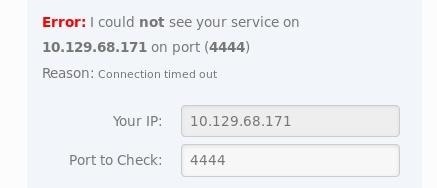

Since we already have a negotiated connection between A and B we should it in most effective way because if we loose this connection before stabilizing our access (with a reverse-connecting trojan for example), we have to re-exploit the target which is not always possible. In such situation, tools like fpipe.exe will not help you much. You may have done so by exploiting a client-side vulnerability on it, and got back your reverse-shell at response. I don`t mind how you may have compromised host B at all. In this scenario it`s also considered that host C ( final destination) is not allowed to send any packet to internet, but host B is allowed to send packets to internet, only if destination port is 53. what if even host "B" is behind firewall and no chance to open any port ? what if we can`t even send a single packet to host "B", while host B is the only system in network which is allowed to connect to "C" ? hmm, this looks a hard scenario, but not really. Ok, let`s make scenario more real-world. Now fpipe.exe will handle incoming connection ( -l 22 ), and pass it to remote host and defined port ( -r 22 host-c ). We run fpipe.exe with below parameters on host "B", and host "A" have to ssh to host "B". Let`s use fpipe.exe to implement above scenario and quickly move to more advanced hints.
#Port forward utilities crack free#
In a flat network design both of these can be same, but if you place host A in internet, host C in deep protected zones of internal network, and host B at boarder of protected network, things change a little bit !įpipe, WinRelay & DataPipe.exe are three free and simple tools designed to do simple port-forwarding. But this time it`s C who begin the connection. In reverse port-forwarding, the case is again preparing connection between A & C through B.

Right like many other terms used in attacks, port-forwarding is also divided into normal port-forwarding and reverse ( remote ) port forwarding.

So if host A connect to 22/tcp of B, sent packets to this port are automatically relayed to C, port 22/tcp.
#Port forward utilities crack software#
Running software on B is defined to pass any incoming connection on opened port to host C and on port 22/tcp. Host C ( real ssh-server) is also listening to 22/tcp. Host B runs a software/service/wrapper that opens a listening socket ( tcp/20 for example) and wait for incoming connections. Assuming the whole forwarding is happening to gain access to SSH on host C, this is how it`s happening from tcp/ip point of view:

If we use host B in middle, to get connection stream from A and pass it to B while taking care of connection, we say host B is doing port-forwarding. Host A should connect to host C in order to do something, but for any reason it`s not possible, but host B can directly connect to C. Ĭonsider host "A", hos "B" in middle, and host "C". As a network administrator, you`ll also learn that how opening even one single port in your outbound ACL can put your whole internal network at sever risk.įirst of all, let me explain what 'port forwarding' is. Inthis post I`ll review some effective ways of doing so, in various situations. so called reverse shells may be your first try, but they are usually too simple and not powerful enough for what we`re going to do. So you should looks for a way to get rid of this limitation and freely browse and probe internal network. The only problem is that you can not access them through internet, and gained shell is not powerful enough to let you do all of your post-exploitation tasks through it. Īssuming you`ve already gained access to at least one host which is linked to internal network, you know there are many other systems there inside, and many interesting services you should play with. Many of you may have faced a big problem while trying to (legally!) gain access to internal network systems & services while you`ve began your attack from outside of boarders of target network : Firewall rules.


 0 kommentar(er)
0 kommentar(er)
